Some parks are known for their epic views.
These? They’re famous for their divas on four legs.
Sure, the mountains are majestic, the rivers are breathtaking, and the sunsets could make you cry—but let’s be honest, you came for the bison traffic jams and bear photobombs.
In these 16 U.S. national parks, the animals have stolen the spotlight.
They’re the unofficial mascots, the stars of tourist snapshots, the ones who draw bigger crowds than the waterfalls.
Moose strut like runway models.
Alligators sunbathe like they own the place.
And elk? Elk will pose—then charge.
Forget peaceful hikes and quiet trails.
This is the wild side of the wild.
Let’s meet the creatures turning these parks into full-blown wildlife stages.
Yellowstone National Park – Bison
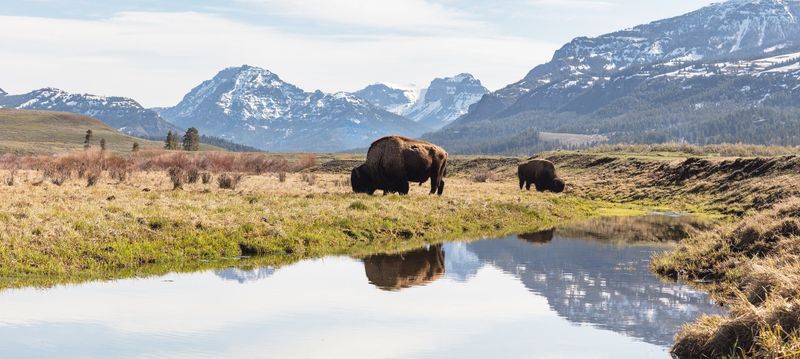
In the sprawling expanse of Yellowstone, bison are the undeniable stars. As the largest land mammals in North America, these majestic creatures roam freely across the park’s vast plains. Watching a bison herd graze, with their shaggy heads and massive bodies silhouetted against a Wyoming sunset, is a quintessential Yellowstone experience.
Their sheer size and strength are awe-inspiring, and their history is deeply intertwined with the park’s identity. Despite their imposing appearance, bison are surprisingly gentle and social creatures, often seen playfully nudging each other or wallowing in the dust.
Did you know? Yellowstone is home to the largest bison population on public land, making it a must-visit for wildlife enthusiasts. Search “Yellowstone bison herd” to see these iconic animals in action.
Great Smoky Mountains National Park – Black Bears
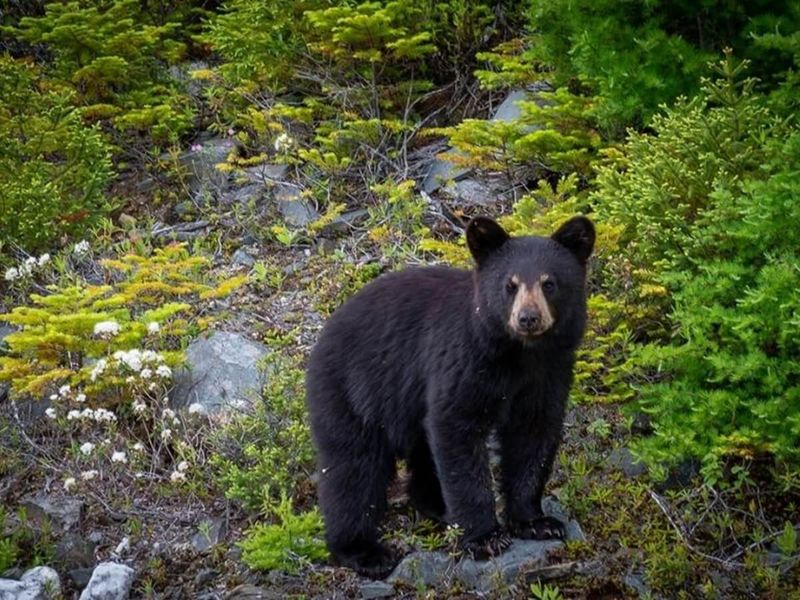
In the dense woodlands of the Great Smoky Mountains, black bears weave their enchanting tales. These furry inhabitants are often seen foraging for berries or taking a leisurely stroll across a forest trail.
With their curious eyes and playful antics, black bears add a touch of wonder to any visit. While they appear cuddly, these bears are wild animals and should be admired from a safe distance.
A fun fact: The Smokies are home to one of the densest black bear populations in the Eastern United States. Search “Great Smoky Mountains black bear sighting” for a glimpse of these fascinating creatures.
Everglades National Park – American Alligators
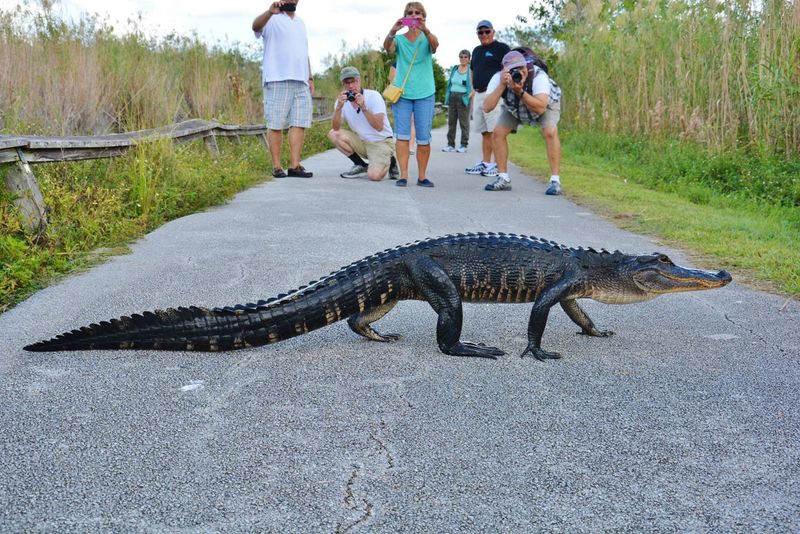
Everglades National Park is a sanctuary for the formidable American alligator. These ancient reptiles, with their powerful jaws and stealthy movements, are a captivating sight along the park’s waterways.
Visitors often spot them sunning on riverbanks, their eyes just peeking above the water’s surface like prehistoric guardians of the swamp. Despite their fearsome reputation, alligators play a crucial role in the ecosystem, creating habitats for other wildlife.
Curious about these creatures? The best time to see alligators is during the dry season when they congregate in deeper waters. Search “Everglades alligator spotting” to view these incredible reptiles.
Denali National Park – Grizzly Bears
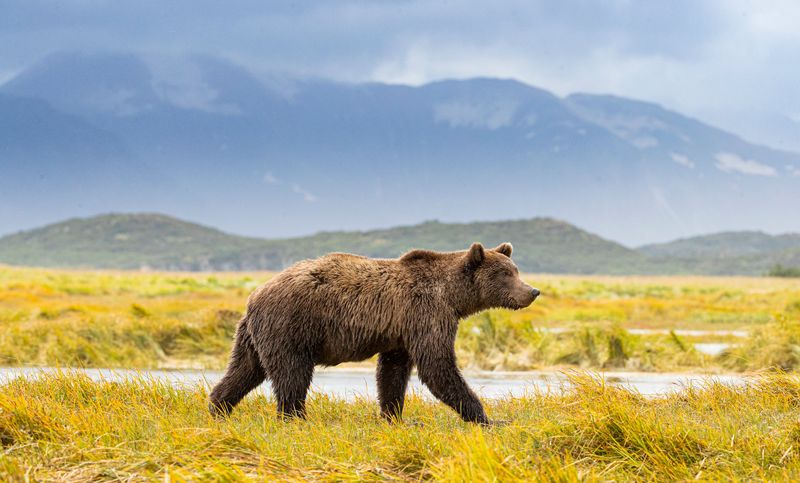
In the wilds of Denali, grizzly bears reign supreme. These magnificent creatures, with their thick fur and powerful paws, are often seen lumbering through the park’s tundra.
Spotting a grizzly is a thrilling experience, especially when a mother bear is accompanied by her playful cubs. Their presence adds a raw, untamed beauty to Denali’s rugged landscapes.
Did you know? Grizzly bears in Denali are often seen digging for roots or fishing in streams, showcasing their adaptability. To catch a glimpse, search for “Denali grizzly bear family” and immerse yourself in their majestic world.
Yellowstone National Park – Gray Wolves
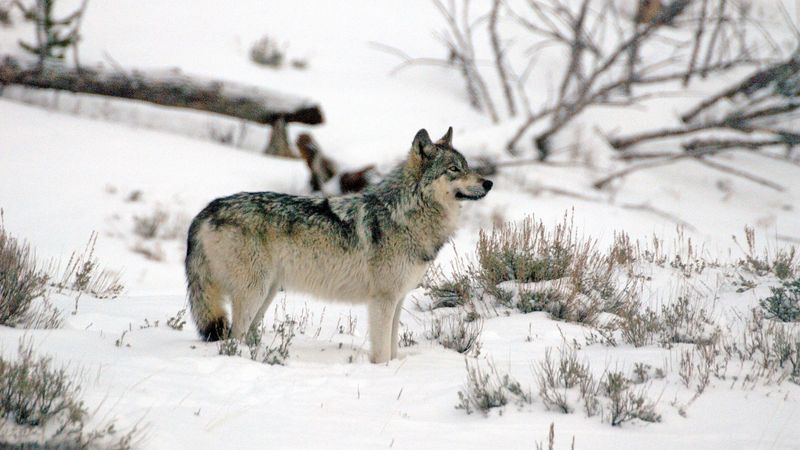
In the heart of Yellowstone, gray wolves are the park’s enigmatic dwellers. These intelligent pack animals are known for their complex social structures and hauntingly beautiful howls that echo through the valleys.
Observing a wolf pack in action is an unforgettable experience, revealing their strategic hunting skills and deep familial bonds. Despite their wild nature, wolves have become a symbol of conservation success in Yellowstone.
Fun fact: Gray wolves were reintroduced to Yellowstone in the 1990s, and their presence has helped balance the park’s ecosystem. Search “Yellowstone gray wolf pack” to witness their captivating dynamics.
Yosemite National Park – Mule Deer
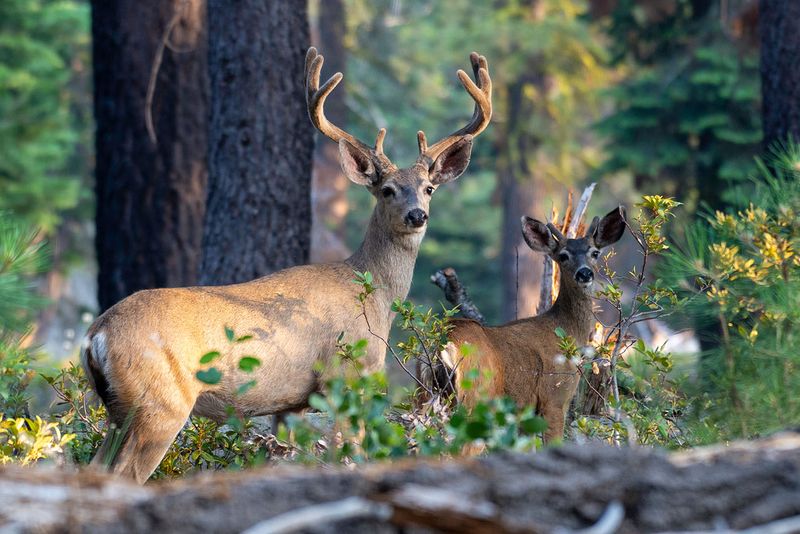
Amidst the towering cliffs and cascading waterfalls of Yosemite, mule deer gracefully roam. Known for their large, expressive ears, these gentle creatures are frequently spotted nibbling on shrubs or bounding across open meadows.
Their presence adds a serene charm to Yosemite’s majestic scenery, offering visitors a glimpse of nature’s tranquility. Mule deer are particularly active during dawn and dusk, making these times perfect for wildlife spotting.
Interesting tidbit: Mule deer are named for their mule-like ears, which help them detect predators. Search “Yosemite mule deer” to see their elegance captured in images.
Grand Teton National Park – Moose
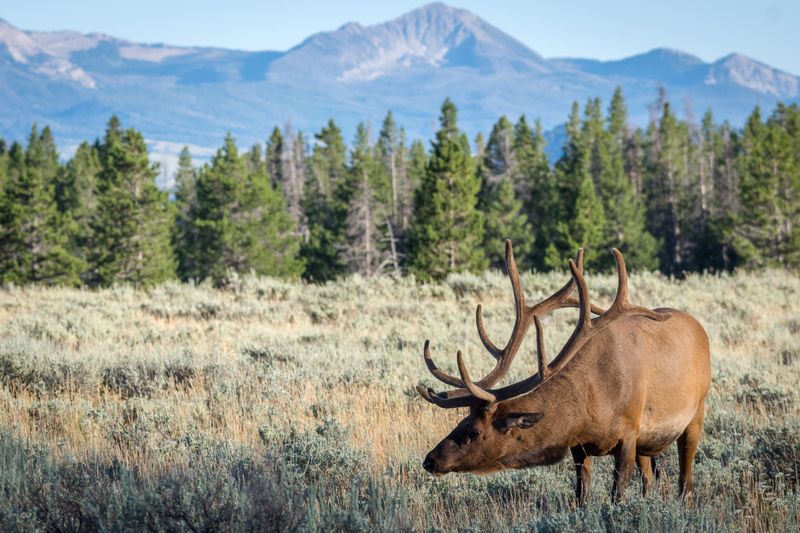
In the serene landscapes of Grand Teton, moose are the giants of the wetlands. With their towering antlers and formidable stature, they are a majestic sight against the backdrop of the Tetons.
Moose are often seen wading through marshes, their massive frames effortlessly navigating the water. Despite their size, these creatures are surprisingly elusive, blending into the park’s lush greenery.
Did you know? Moose are excellent swimmers and can even submerge themselves to feed on underwater vegetation. For a chance to spot these gentle giants, search for “Grand Teton moose” and explore their majestic world.
Zion National Park – Desert Bighorn Sheep
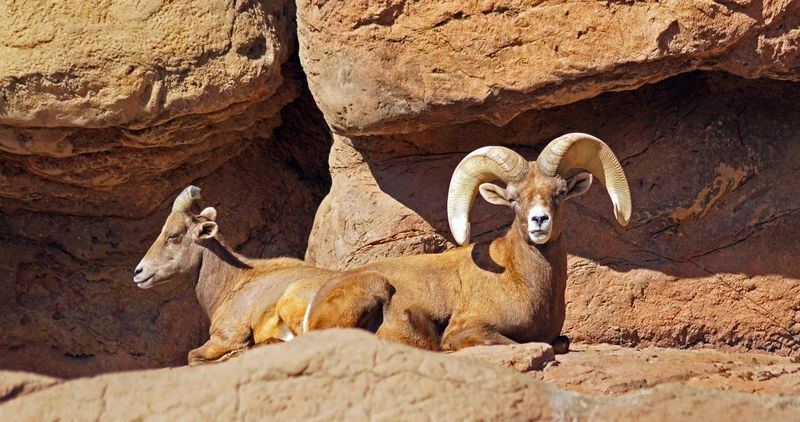
In the dramatic canyons of Zion, desert bighorn sheep are the acrobats of the cliffs. With their powerful legs and curved horns, they navigate the rocky terrain with remarkable agility.
Spotting these elusive creatures is a thrilling adventure, as they blend seamlessly into the rugged backdrop. Their presence is a testament to Zion’s diverse wildlife and natural beauty.
Fun fact: Bighorn sheep can be seen year-round in Zion, but the best time to spot them is during the cooler months. Search “Zion bighorn sheep” to see these cliff-climbing wonders in action.
Glacier National Park – Mountain Goats
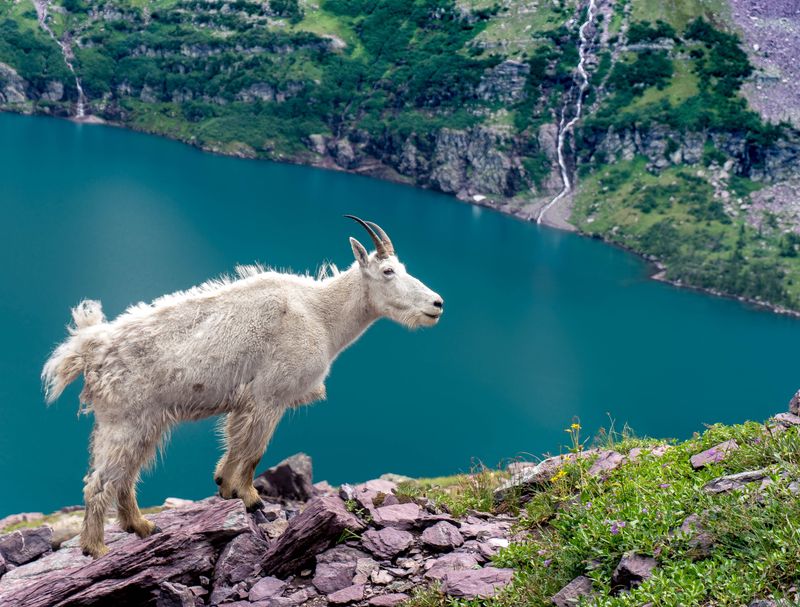
In the alpine landscapes of Glacier, mountain goats are the true mountaineers. These sure-footed animals, with their thick white coats, are often found traversing the park’s steep cliffs.
Their ability to climb seemingly impossible slopes is a marvel to behold, showcasing nature’s adaptability. Visitors to Glacier are often captivated by the sight of goats effortlessly ascending rocky peaks.
Here’s a fun fact: Mountain goats are not true goats but are more closely related to antelopes. To witness their climbing prowess, search for “Glacier mountain goats” and be amazed by their agility.
Rocky Mountain National Park – Elk
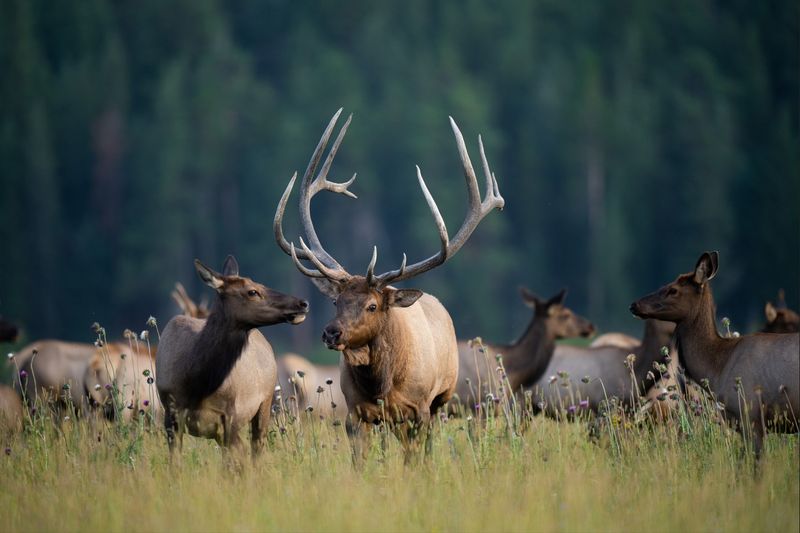
In the sprawling meadows of Rocky Mountain National Park, elk reign supreme. With their majestic antlers and regal presence, they are a quintessential symbol of the park’s wildlife.
Visitors often hear the haunting bugle calls of elk during the fall rut, a sound that echoes through the mountains. Observing a herd of elk grazing in the meadows is a serene and awe-inspiring sight.
Did you know? Rocky Mountain National Park is home to one of the largest elk populations in North America. Search “Rocky Mountain elk herd” to see these magnificent creatures in their natural habitat.
Katmai National Park – Brown Bears
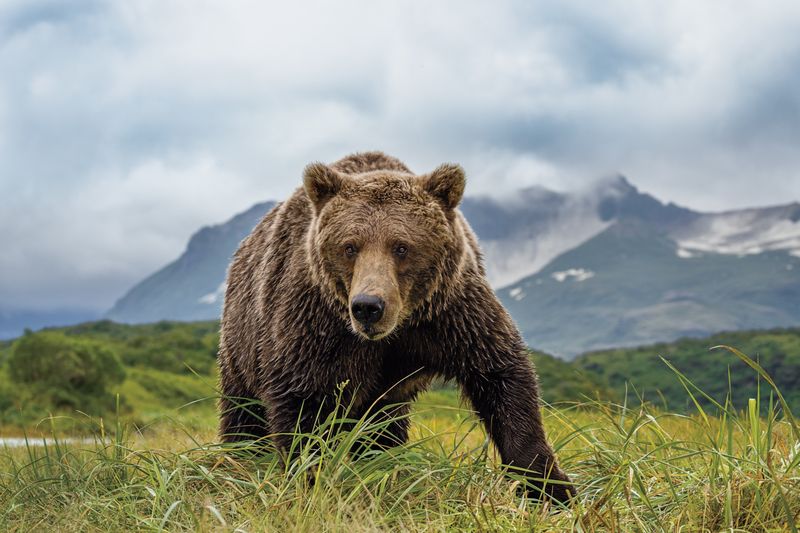
At Katmai, brown bears are the unrivaled stars, especially at Brooks Falls where they fish for salmon. Their immense size and strength are impressive as they stand poised, waiting for their next catch.
Watching these bears is a captivating experience, offering a glimpse into the raw power of nature. The spectacle of bears catching leaping salmon is a highlight for visitors.
Fun fact: Katmai hosts one of the largest brown bear populations in the world, making it a premier destination for bear viewing. Search “Katmai brown bear salmon” to witness this iconic scene.
Olympic National Park – Roosevelt Elk
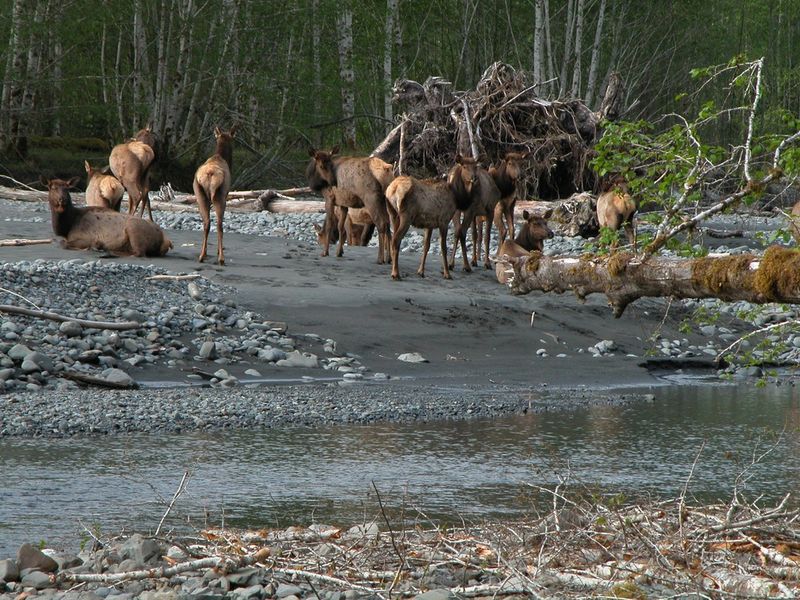
In the enchanting rainforests of Olympic, Roosevelt elk reign with their grand size and stately demeanor. These majestic creatures are often seen grazing peacefully among the moss-draped trees.
The sight of a herd moving through the misty forest is a serene and unforgettable experience. Roosevelt elk, named after President Theodore Roosevelt, are the largest of the elk species.
Did you know? Olympic National Park is one of the few places to see these magnificent animals in such a lush environment. Search “Olympic Roosevelt elk” for a glimpse into their tranquil world.
Crater Lake National Park – Bald Eagles
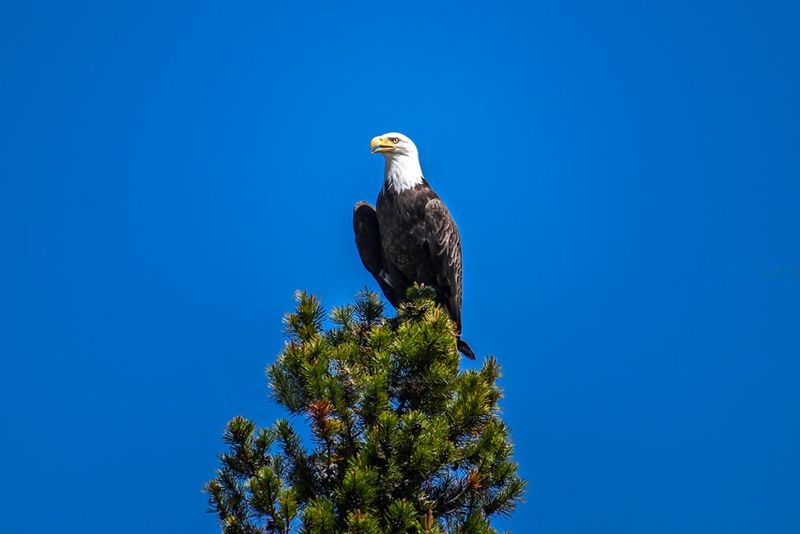
Above the pristine waters of Crater Lake, bald eagles are the aerial masters. With their striking white heads and powerful wingspans, these birds are a symbol of freedom and majesty.
Watching a bald eagle soar over the lake’s caldera is an awe-inspiring sight, epitomizing the wild beauty of the park. Eagles are often seen perched on tall trees, scanning the water for fish.
Interesting fact: Crater Lake’s clear waters provide excellent fishing grounds for these skilled hunters. Search “Crater Lake bald eagle” for breathtaking images of these magnificent raptors.
Acadia National Park – Peregrine Falcons
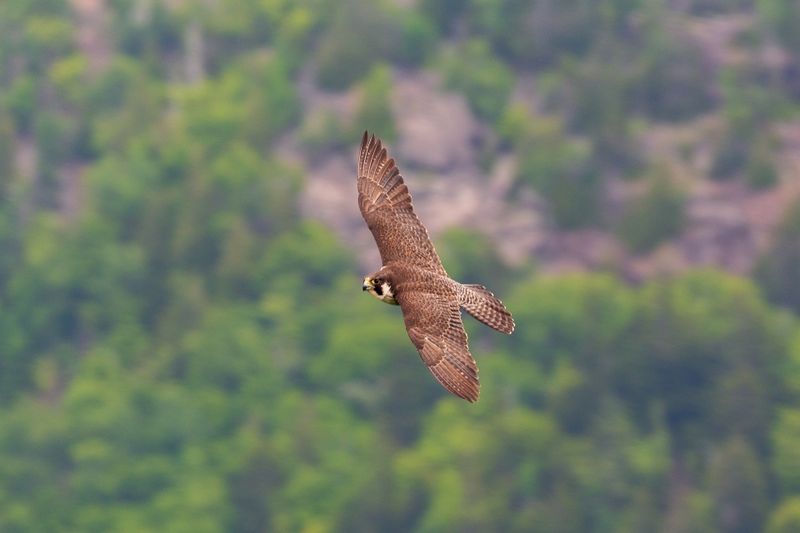
In the rugged cliffs of Acadia, peregrine falcons are the swift aerial hunters. Renowned for their incredible speed, these birds are often seen diving towards prey at astonishing velocities.
Their presence adds a dynamic energy to the park’s serene landscapes. Observing a peregrine falcon in flight is a thrilling experience, showcasing nature’s precision and grace.
Did you know? Peregrine falcons were once endangered but have made a remarkable recovery. Search “Acadia peregrine falcon” to witness their incredible aerial feats and celebrate their conservation success.
Shenandoah National Park – White-tailed Deer
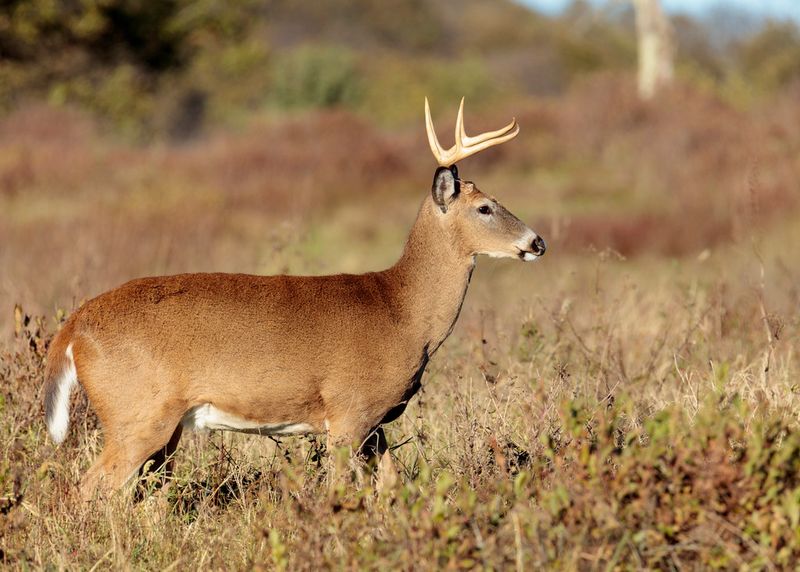
In the serene forests of Shenandoah, white-tailed deer add grace and beauty. These gentle creatures are often seen quietly meandering through the woodland, their white tails flicking elegantly behind them.
The sight of a deer delicately stepping through fallen leaves is a moment of tranquility and connection with nature. White-tailed deer are a common yet cherished sight for visitors.
Fun fact: During the fall, male deer, or bucks, grow impressive antlers that they shed every winter. Search “Shenandoah white-tailed deer” to capture these graceful moments.
Big Bend National Park – Javelinas
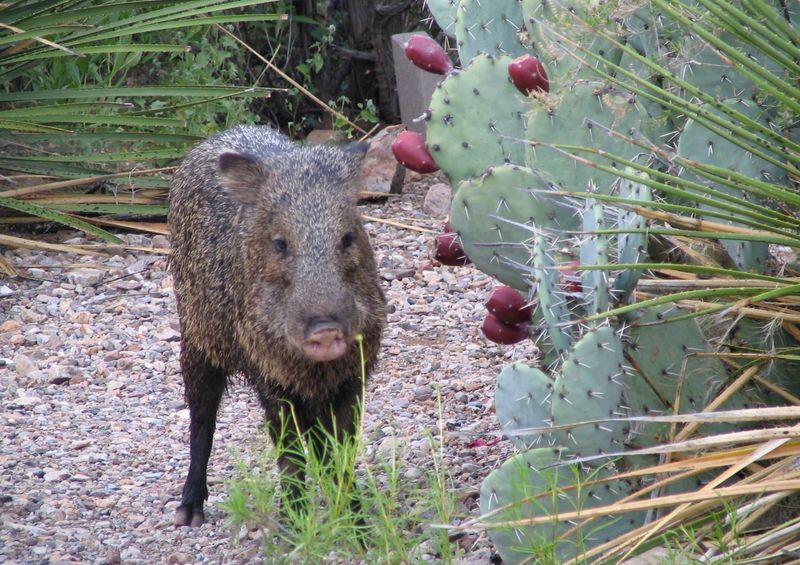
In the arid expanse of Big Bend, javelinas scuttle across the desert. Often mistaken for wild pigs, these unique creatures travel in groups, grazing on prickly pear cactus and other vegetation.
Their social nature and distinctive appearance make them a fascinating sight for visitors. Despite their porcine resemblance, javelinas are members of the peccary family.
Did you know? Javelinas have a scent gland on their backs, which they use to mark their territory. Search “Big Bend javelinas” for a glimpse into the lives of these desert dwellers.

